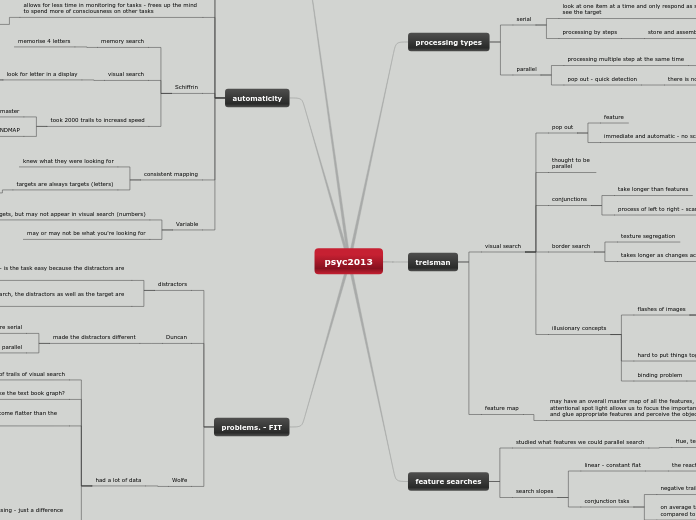da Archie bO mancano 13 anni
298
psyc2013

da Archie bO mancano 13 anni
298

Più simili a questo
there's not such thing as parallel processing - just a difference in efficiency
deicion making problem
no difference in feature and conjunction searches
easier tasks has less decisions to be made
faster when the display is larger because the task becomes easier - makes the target more salient
differences in efficiency
hard tasks
looking for activation map for red and circular
heterogenous distractors
inefficient task
completely overlapping
easy tasks
guided searchs
we have guided searches and activation maps
activation map for distractors could just be thrown away
search results for feature searches did come flatter than the conjunctions
never completely flat for feature searches
did it come out like the text book graph?
put together millions of trails of visual search
less parallel
the search became more difficult and more serial
every item you saw a K or H you knew you would be looking for it
LOOK UP OTHER MINDMAP
said that practice takes a long time to master
look for letter in a display
searching through memory? or physical items
1 or 4
memorise 4 letters
built into visual system
on average takes much longer for greater numbers of displays compared to single feature targets
negative trails
take longer on average as its harder to say no
the reaction time is independent of the display size
build an object file using features bound together
binding problem
thought to support serial processing
hard to put things together without attention
flashes of images
noticing shapes and colors, but not putting it together coherently
blue car and red toy
red car and blue toy
takes longer as changes across border are more complex
texture segregation
process of left to right - scan
take longer than features
immediate and automatic - no scanning or searching
feature
there is no change to response time as we increase distractors
store and assemble all steps simultaneously at the end
store and assemble after each step
as we increase distractors we have increased response time